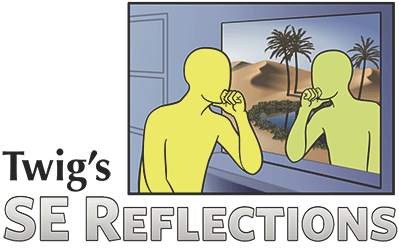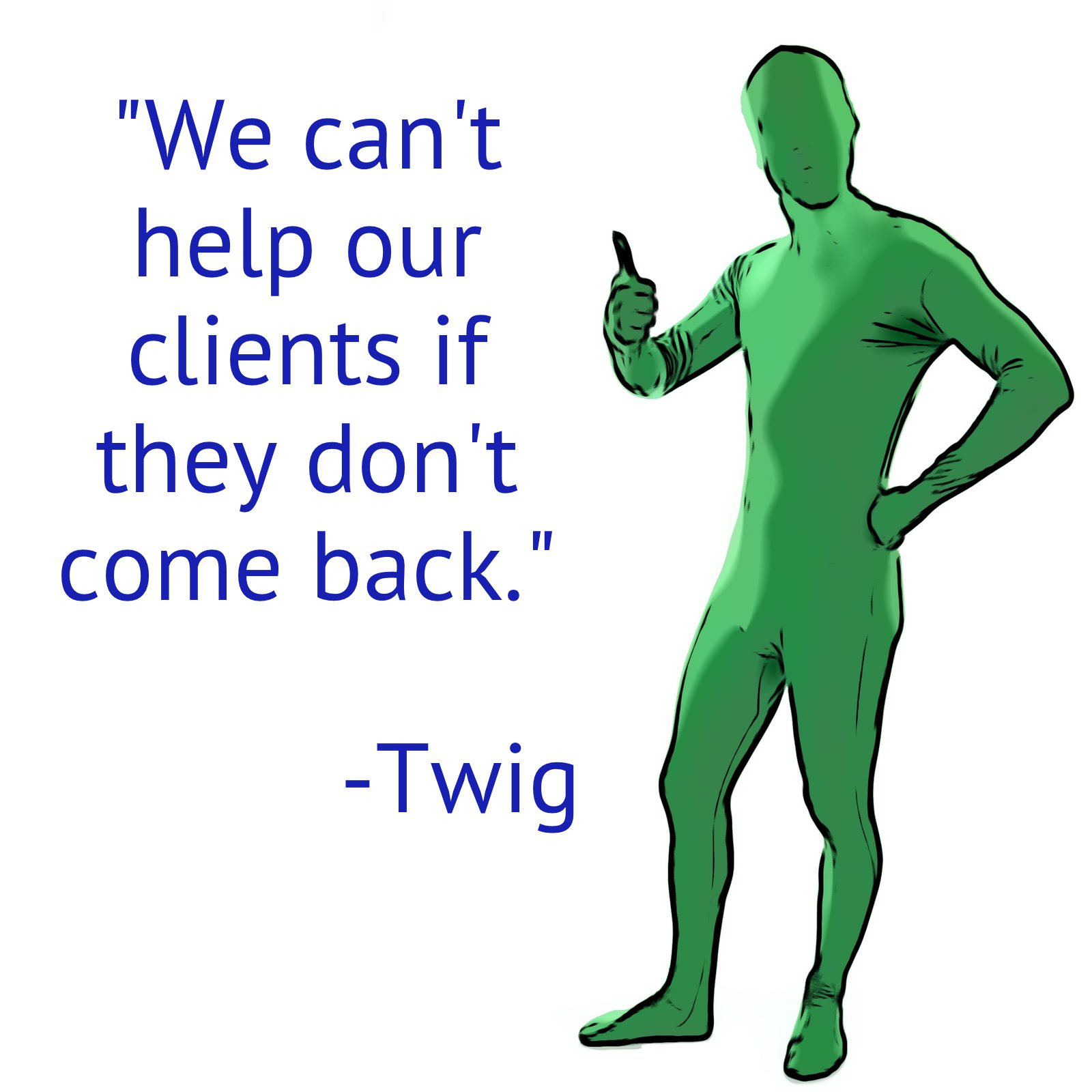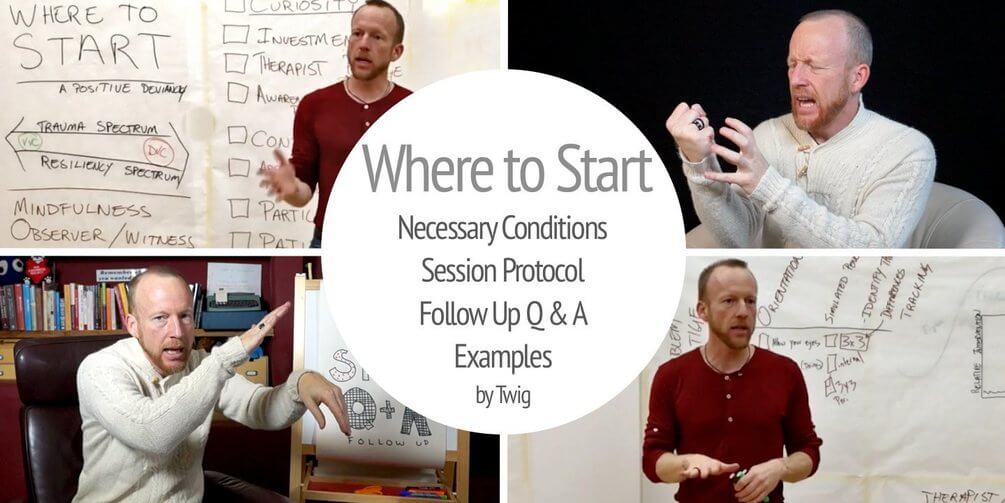This Material has Matured:
It’ll be made into an online resource and Guide once there’s sufficient interest from SE Practitioners like yourself
A Workshop on the Dynamics of Introducing Somatic Experiencing® to your clients
Grabbing and sustaining a client’s interest in their felt-sense experience is an art. That’s especially true for people with disregulated nervous systems (i.e. “traumatized”). When the body has become “the house of pain” who wants to “just feel that?”
This art requires careful attention to the entire process of a course of work and critical to success is the very beginning.
This one-day workshop will attend to typically ignored, under appreciated or hidden dimensions of a successful SE practice – namely how we:
- Make initial contact with our clients
- Establish a working contract
- Turn older clients into SE clients
- Manage expectations
- Cultivate referral sources
- Clarify our scope of practice
- Name our price and availability
- Explain what we do with SE and why it’s helpful
If you’re often wondering how to get people interested and invested in doing “real SE sessions with you” –
this workshop was made for you.
Next Offering:
Last Live Offering:
We’re talking about these themes in the Where to Start v.2 program.
Save Time – Learn from Twig’s Mistakes
Many aspiring SEP’s struggle with the question: “How do I talk about this stuff with other people.” We’ll animate this question into compelling answers that will move your SE related introductions from “uhmm?” to “that’s it!” You’ll improve both your marketing and therapeutic efforts. Plus, we’ll make it fun.
Here’s a good thought: One of the major mentors in my life, the “Wizard of the Woods” Mors Kachanski used to tell me, “You don’t have time to make all your own mistakes. You need to learn from the mistakes of others. Doing so saves you time on getting where you want to go. Plus, not learning from others may get you in trouble unnecessarily.”
This workshop revolves around this notion. After stumbling for years through the unchartered terrain of explaining SE to countless different kinds of people – from Doctors to Village Farmers – I’ve got some insight to share. You can learn from my mistakes and make better use of yours.
3 Reasons this class is going to be helpful to you and your practice
1) You’ll feel more confident introducing the “newness” of SE to your clients.
New things take time to be appreciated, Somatic Experiencing is no exception.
- Psychotherapy has been around for about 100 years
- Somatic Experiencing for less than 40 with Levine’s Waking the Tiger first published in 1997
Our culture has deep expectations of what therapy looks like. That means SE practitioners have some work cut out for them. To avoid frustration for both client and therapist it would be best for SE practitioners to think about how they introduce their work to new and prospective clients. After all, while we share similarities with other therapeutic models, ultimately we’re offering something very different than the norm.
To address this we will discuss strategies and practice our lines for introducing SE to help create interest, curiosity, and expectation within an environment of participation, investment and willingness to try something new.
2) You’ll feel more confident in marketing SE to your clients and forming referral sources.
Helping clients resolve incomplete sensory-motor “instructions for self-protection”, which are inherently “tied to the expectation of danger”, requires proper attention at every step along the way. This includes the very first contact with our clients: referrals, advertisements, websites, lectures and promotional events, even random encounters. How our work is introduced strongly influences our ultimate success.
Fortunately, tons of helpful guidelines for effectively combine these issues is found within the SE theory and science of traumatology itself. We’ll look at these and work to cultivate a language of progress, process and potential without overstate or misrepresent value and expectations.
3) You’ll feel more confident in the early stages of getting things going in “the right direction.”
“As they go in, so they come out.” That’s what we know about coming out of the immobility response. This biological imperative means that many clients will actually feel worse before they feel better. What a set up for practitioners as helping to get out of the freeze response (and it’s highly deleterious effects) often leads to periods of heightened intensity of emotion, physical pain, anxiety and other real forms of distress.
Are you able to recognize if these seemingly negative changes are in the “wrong” or “right direction”?
For example, increased pain on the second session? It could be either:
- The disquietude of coming out of freeze as a necessary step toward fundamental nervous system reorganization and stress response completion or
- Doing too much (not titrating enough), reinforcing high arousal (recapitulating current conditioning and “re-truamatizing”), unintentionally inhibiting deactivation (by not allowing the pendulation to hit a necessary threshold, i.e. unnecessarily “resourcing” a person), etc…
Even if it is “just coming out of freeze” how are you going to talk to your clients about it with them? Will they:
- Believe that you appreciate the truthfulness of their pain?
- Understand your explanation that the pain is sensible aspect of things moving in the right direction?
- Follow your interventions that are meant to help facilitate proper levels of titration and speed of pendulation?
- Feel your language to be sufficiently directive or invitational as needed in order to maintain observation, permission and curiosity?
How you get things going, and how you keep them going – even when they hit initial turbulence – is central to success of real life changing sessions later on.
Your Marketing Efforts are Key to Your Ultimate Success in Future Sessions
The benefits of a study like this create a positive feedback:
–> Better Marketing of SE –> More Success in SE Sessions –> Increased Likelihood of a Successful Practice –> Easier Marketing…
The more your marketing becomes another important (and potentially enjoyable) step along the way to helping a person move through their “traumatic material” the more success your sessions will have. Vis á vis, if you start helping people they way that SE has the potential to do, your marketing issues will solve themselves.
Related SE Reflections Blog and Podcast Posts
Marketing SE – Do We Call it Accumulated Stress or Trauma?



